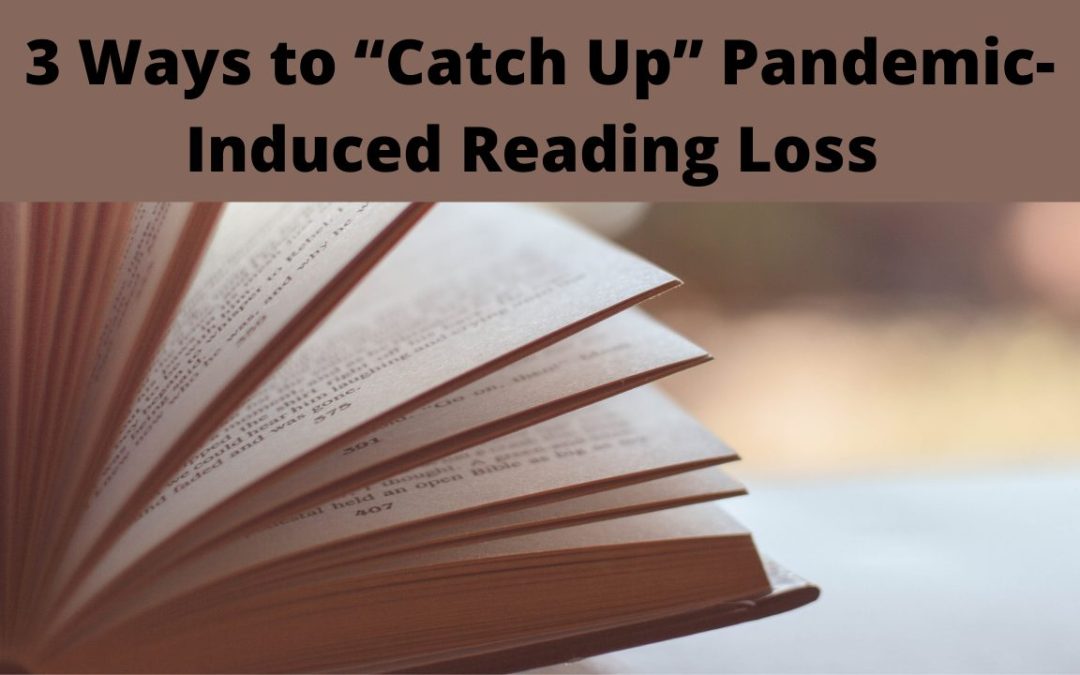Parents are concerned, teachers are concerned, even the Department of Education is concerned. Learning loss due to COVID-19 is a real issue across the United States. Even the best laid out virtual and hybrid plans could not compensate for the lack of engagement and accountability among students across the country. But at least we have recognized the problem, which is half the battle, right? The question remains how do we proceed without falling further behind? Through careful observations and data analysis, I have identified 3 key elements to improving reading performance among grade school children.
-
BUILD STAMINA The number one way to improve reading performance is to build stamina. Building stamina is essentially a fancy way to say practice. The tried and true saying, “practice, practice, practice,” applies to athletes, musicians, actors, and yes, even readers. Building stamina allows students to engage with longer text, dig deeper into the meaning of a story, and make text to self connections all while relating the content to global issues.
Now students will not be able to sit and read for 30 minutes right off the bat. It’s important to start off with a small goal of about 10 minutes and then increase the reading time gradually. Students should also be reading self-selected novels, or novels that interest them, on their reading level. Texts that are too difficult will only frustrate students, derailing the purpose of the reading which is to increase stamina.
-
FOCUS AND ATTENTION
Along the same lines as building stamina, it’s important to have students focus their attention on one activity for a substantial amount of time. Giving children choices is great, but once they make a decision they must stick with it. No flip-flopping back and forth. This will prepare them to stay on task and finish assignments, even if they find the activity dull and boring. Attention and focus is essential to learning, and with so many distractions in our daily lives, it’s no wonder that children are struggling.
To improve focus, encourage your child to find a quiet place, free from distractions, with ample lighting to study or read. Using timers will allow students to see how much time they spent engaged on the assignment. Timers also add a sense of urgency to complete an activity, therefore increasing focus and attention. Playing find it games, like Where’s Waldo? or Highlights kids’ Hidden Pictures™ have been known to increase concentration and attentiveness in young students. Chunking assignments into smaller, more manageable bits will draw attention to each individual task that needs to be accomplished. Also, do not forget the importance of being well rested and well nourished.
-
BUILD BACKGROUND KNOWLEDGE:
Another strategy that may reverse learning loss is building up background knowledge. Some parents and educators may not understand why this is such an important and crucial skill. Reading encompasses so much more than just simply reading words. Comprehension is an integral part of reading. It’s what makes reading enjoyable! Without comprehension, books are just white pieces of paper with typed letters. In
order to build and improve upon reading comprehension, a child must be able to relate to and interact with the text. If a child does not know the subject matter being discussed, then he will not be able to immerse himself in the story, nor will he be able to use his imagination to visualize the events.
So how does one build background knowledge? Simple activities, such as comparing two objects with analogies or creating a mind map with different categories will help students make connections between words and ideas. Discussing the topic beforehand and having your child share their thoughts about the subject (even if the child has been misinformed) will enable you to activate their prior knowledge so that they can make connections with the text. Building background knowledge can also be done through multimedia, like videos (educational of course), and through experiences like field trips, virtual or in real life.
Honorable Mentions: Other key areas that may negate the effects of COVID-19 learning loss include improving reading fluency and acquiring content-specific and academic vocabulary. Children learn to sound out words at an early age, but if they cannot make sense of the words, then they might as well be written in Greek.
Were parents and educators prepared for the magnitude of COVID-19 learning loss? Probably not. But in times of crisis we must persevere and continue to strive for greatness. Focusing on improving the educational experience of our youth to include activities that build students’ capacity to relate to the material in a way that is meaningful and engaging will lessen the severity of this pandemic-induced learning gap.
Melissa Quinn

